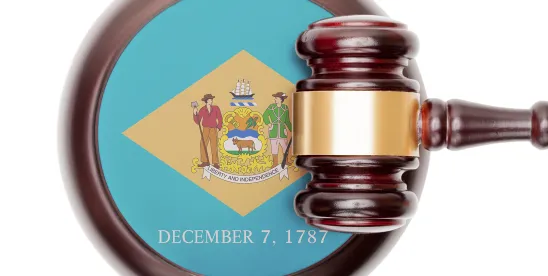The Delaware Supreme Court provides useful clarification regarding when a fraudulent concealment claim tolls the statute of limitations for indemnification claims, in LGM Holdings, LLC v. Gideon Schurder, et al., Del. Supr., No. 314, 2024 (April 22, 2025).
Background
In this post-closing dispute involving claims of intentional breach of representations and warranties in an acquisition agreement as well as fraudulent concealment, the court considered evidence of wrongdoing the sellers found after closing and in connection with an investigation by the FDA and the United States DOJ.
The post-closing investigation was the basis for claims that triggered indemnification. After the investigation, a separate letter agreement between the parties imposed caps on indemnification–but only for certain claims related to the government investigation.
Key Legal Principles
The high court explained that when contract interpretation is at issue, the trial court may not grant a motion to dismiss when there is more than one reasonable interpretation. See Slip op. at 16, 20-21.
The Supreme Court also instructed that when additional support for a key argument made at the trial level is presented for the first time on appeal, that additional support is not waived even if not presented to the trial court. Slip op. at 20.
The court addressed when fraudulent concealment will–or will not–toll the statute of limitations. The court’s analysis should be reviewed in its entirety but a few highlights include the following:
- Under the doctrine of fraudulent concealment, the statute of limitations can be disregarded, like “stopping a clock,” when a defendant has fraudulently concealed from a plaintiff facts necessary to put the plaintiff on notice of the truth.
- Specifically, a plaintiff must allege “an affirmative act of actual artifice” by the defendant that either prevented the plaintiff from being aware of material facts or led the plaintiff away from the truth. Slip op. at 22.
- The statute of limitations begins to run when the plaintiff is objectively aware of the facts giving rise to the wrong, i.e., on inquiry notice. Slip op. at 23.
- The tolling stops on the date the plaintiff was put on inquiry notice of the claim—if the plaintiff successfully proves fraudulent concealment. Slip at 25. The trial court erred when it instead held that the plaintiff was put on inquiry notice such that the plaintiff had sufficient time to file a claim. Id.
- Partial disclosure of facts in a misleading or incomplete way can rise to the level of the requisite actual artifice. Slip op. at 26.




 />i
/>i
